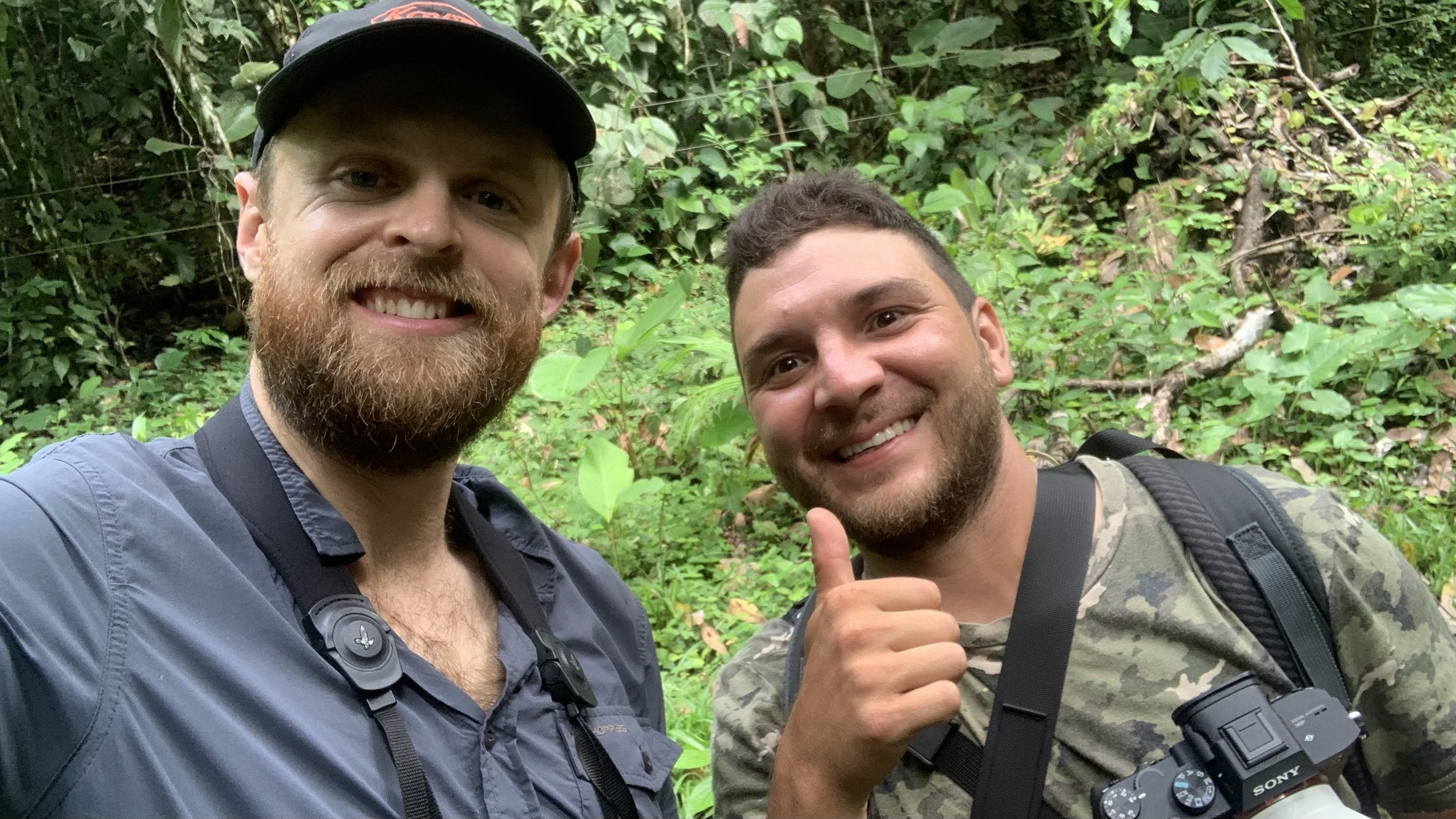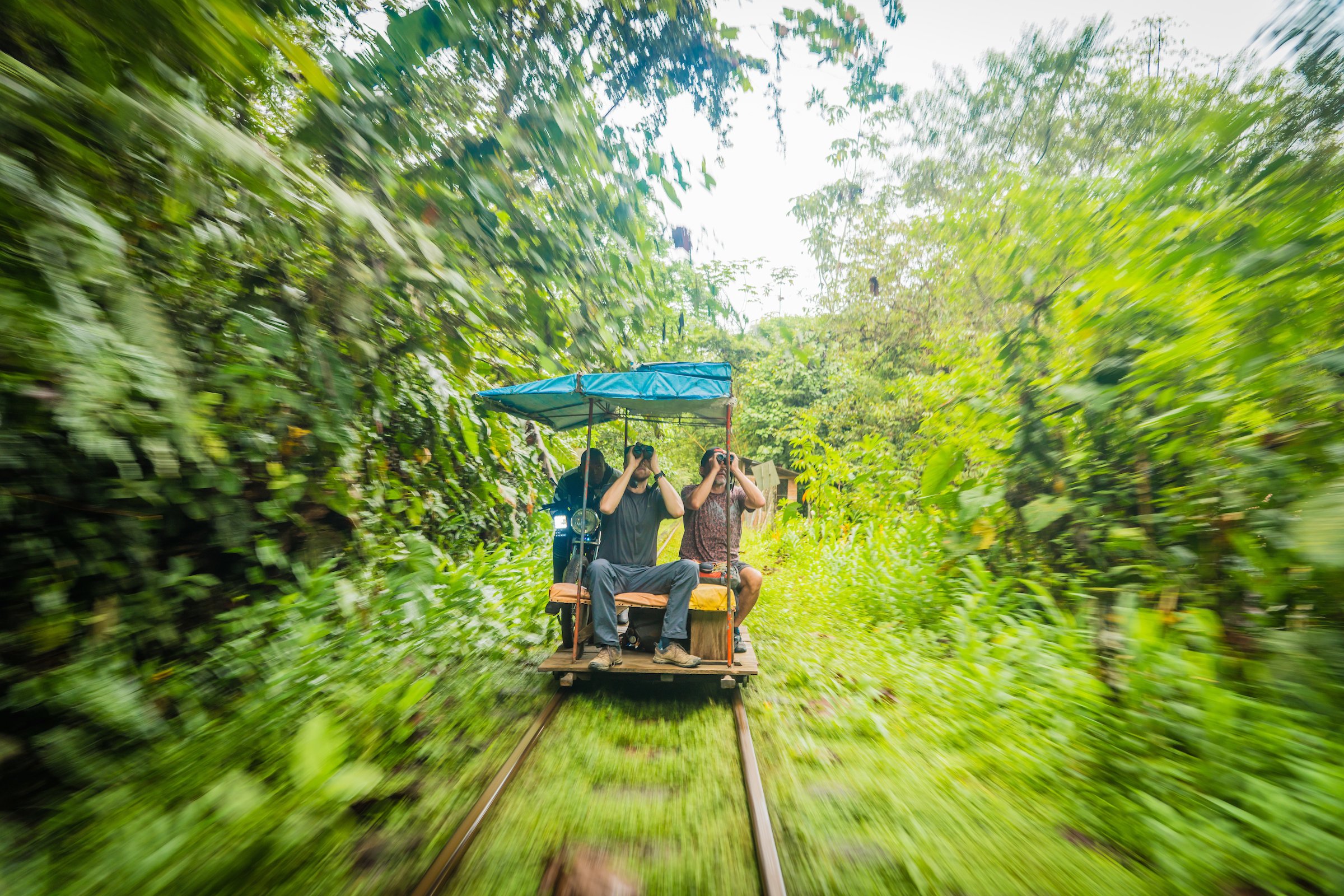A Weekend Birding Adventure to Colombia’s Meta department
White-chested Puffbird, Bosque Bavaria, Meta, Colombia
Our host Chris recently enjoyed a long weekend of birding in the Colombian departments of Meta and Cundinamarca that perfectly encapsulates why Colombia is such an essential birding destination, exploring three distinct ecosystems in just a few days.
For any birder living in Colombia and working a full-time job, there’s one magical little word that never fails to get the heart rate up: Puente. While any beginner Spanish learner might wonder why the word ‘bridge’ has such a strong effect, puente in Colombia has a crucial second meaning - it’s the local term for a holiday. These holidays typically fall on a Monday and create a sort of ‘bridge’ to the weekend. In other words: a three-day weekend! And in a country as megadiverse as Colombia, there’s a lot you can do as a birder with three full days to travel!
For the August puente, I took a trip with some friends down from Bogota to the Eastern Plains department of Meta. During this trip, we visited three distinct ecosystems in just two-and-a-half days, perfectly highlighting why birding in Colombia is such a joy.
Our trip began before dawn when we departed from Bogota and headed east down the mountains to the tiny roadside town of Guayabetal. Here we switched transport to a 4x4 and headed up a dirt road to around 2,000 m (at this point, we were technically still in Cundinamarca department). We were visiting an excellent new reserve named Sendero La Herrera, where a local family has started feeding the extremely range-restricted and endemic Cundinamarca Antpitta.
A Cundinamarca Antpitta at Sendero La Herrera
While this species was once considered near-mythical and almost impossible to see, Luis Ariel Herrera’s dedication has paid off. The elusive antpitta can now be enjoyed at extremely close range from a small hide below the family’s home. It took him years of trial and error, experimenting with different feeding locations, times, and food types, before he finally opened to the public at the end of 2021. As a result, this reserve is now the only place on earth where birders can be (relatively) sure of seeing a Cundinamarca Antpitta.
After arriving at the reserve, we birded the garden and added Ochre-breasted Brushfinch, Bluish Flowerpiercer, Collared Inca, Speckled Hummingbird, and Long-tailed Sylph to the trip list. After enjoying a delicious breakfast prepared by Luis Ariel’s wife Nubia and their daughter (and huge bird lover) Shaira, we headed to the hide to observe the antpitta. One individual was already waiting for Luis Ariel to arrive, and we didn’t have to wait more than five seconds to enjoy walk-away views of this Colombian endemic.
After viewing the antpitta, we birded the cloud forest trails surrounding the house. These trails are an excellent place for mixed flocks of tanagers, hemispingus, warblers, and other cloud forest specialties, but we had another bird fixed in our sights: Emerald-bellied Puffleg. This small puffleg hummingbird is poorly-known in Colombia, with just over 150 eBird reports and only 16 photographs. However, Luis Ariel’s son Yersson - the reserve’s bird guide - has dedicated himself to finding the bird. As a result, he now has a few reliable spots in the forest, where the hummer regularly appears to feed on flowers and perch.
After a brief pause to enjoy a remarkably confiding Long-tailed Tapaculo, we headed straight to one of those spots and set in for a long wait. Thankfully, the bird didn’t keep us waiting long, and we got spectacular views of this shy little hummer as it fed just a few meters from us and perched out in the open. The photographers in the group were giddy with excitement at their lifer, and even though this species wasn’t new to me, I couldn’t believe the views we got. I even managed to digiscope the thing!
We grabbed some lunch back at the house and headed back down the mountain, briefly pausing to scan for Black-and-chestnut Eagle, which is regularly seen from the house. No dice this time. After changing into warm weather clothing, we continued down the fringes of the Eastern Andes to the capital city of Meta department, Villavicencio. We’d be back there in a day, but for now, it was onwards to the south as we drove a further two hours to the city of Granada.
We arrived in Granada after dark to find the entire town in full-on party mode. Unfortunately, we hadn’t realized that the biggest annual festival was happening that weekend, so a good night’s sleep was off the cards. Not because we wanted to party, but because there’s no sleep-destroying noise like a regional Colombian fiesta in full swing!
After a fitful night’s sleep, we rose at dawn and met our 14-year-old guide, Andres. Andres is a local Granada birder whose wealth of knowledge belies his years, and he would be joining us for the morning at Los Camorucos Reserve, a small private reserve just outside the city. Los Camorucos is a labor of love by owner Santiago Millan, carrying on the fine reforestation and conservation work done by his father, who tragically passed away due to Covid. They’ve planted a load of native trees and flowers and turned an intensive agricultural site into a delightfully biodiverse bird reserve.
We were at Los Camorucos for one bird in particular: the Spangled Coquette hummingbird. This tiny little hummer is another poorly-understood species in Colombia that appears to undergo seasonal altitudinal migrations. The problem is, nobody really knows where to yet! However, for a couple of months every year, a few Spangled Coquettes turn up in the garden of Los Camorucos to feed on their purple verbena flowers.
The real target for birders and photographers is the male coquette, with its surreal spiky orange crest. By this point, the males had migrated away from the reserve, but a female and juvenile were still putting in sporadic appearances at the verbenas. So even though we’d have to wait another year to see the jaw-dropping males, we could at least get a lifer (and the females are pretty in a more understated way as well). The coquette didn’t make us wait long either; she arrived early and regularly throughout the morning, affording us fabulous views as she fed alongside Glittering-throated, Versicolored, and Blue-tailed Emeralds.
The female Spangled Coquette we saw at Los Camorucos (photo: Mauricio Rueda)
Other highlights of our morning at Los Camorucos included Small-billed Elaenia, two Great Potoos, a pair of Common Tody-Flycatchers building a nest, a Dark-billed Cuckoo, a Long-billed Starthroat sitting on a nest, and a Stripe-necked Tody-Flycatcher. Of course, Santiago’s delicious eggs, arepas, and coffee didn’t hurt, either!
After a massive local BBQ lunch, we jumped in the car and drove through driving rain to get back to Villavicencio. I knew a spot just outside the city where we could look for the endemic Ornate Titi monkey, so we made a beeline for that patch of forest as soon as we arrived. The titis got the memo from the hummingbirds about not making us wait, and they dutifully showed up and posed for a load of photos and digiscope videos. On our way back to the hotel, a bonus Giant Anteater right by the side of the road completed one of the best days of nature-watching I’ve had in years.
For our final morning in Meta, we headed to Bosque Bavaria Reserve on the outskirts of Villavicencio. We were joined by the region’s best local guide, Elvis Felipe Quintero. Bosque Bavaria is the top eBird hotspot in Meta, with over 400 species reported. With its privileged location in the foothills of the Eastern Andes, it contains a fascinating mixture of Andean, Amazonian, and Orinoquia species. It is a must-visit birding destination for anyone planning a trip to the area.
All that being said, birding at Bosque Bavaria can be extremely tough, with the low light conditions and skulking species that are the primary targets for birders. Nevertheless, our morning started well, with excellent views of White-browed Antbird and Dusky Antbird and a Blue-fronted Lancebill feeding overhead in a flowering tree.
As we continued to bird the road, I heard a shout from Elvis up ahead. After dashing a couple of hundred meters up the road, I was rewarded for my efforts with a lifer: my Colombia nemesis bird, Spix’s Guan. This shy guan of the Amazon and Orinoquia regions is pretty elusive, but it’s widespread and hardly rare, so it represented an odd omission from my Colombia list. I enjoyed extended views of a pair feeding in a fruiting tree and finally ticked it off. That’s 1,406 species seen in Colombia now!
Beautiful Bosque Bavaria
The rest of the morning’s birding in Bavaria was typically tricky. Although we got looks at species like Black-faced Antbird, Yellow-billed Nunbird, and White-chinned Jacamar, many of my friend’s targets were proving elusive. Sepia-capped Flycatcher called but refused to show itself, while the constant call of the Northern Slaty-Antshrike sounded almost mocking in the dense undergrowth. The big target was the White-chested Puffbird, but we kept drawing blanks at known stakeout spots on the road.
Finally, and as the morning drew to a close, the puffbird called in the forest, and after a frustrating twenty minutes of failing to spot it, we got terrific views of a pair perched out in the open just below the road. What a cracking bird! The White-chested Puffbird is another species with relatively few records in Colombia, and virtually all of them come from Bosque Bavaria. So this is the only reliable site to search for that bird in Colombia.
After a quick lunch in Villavicencio, it was back in the car and on the road to Bogota. Another excellent birding weekend in Colombia: a couple of lifers, some beautiful views of mammals, and yet more evidence to back up my oft-repeated claim that there’s no better birding country than Colombia.
















